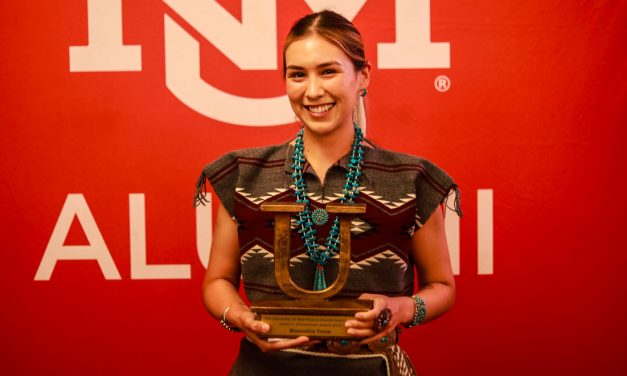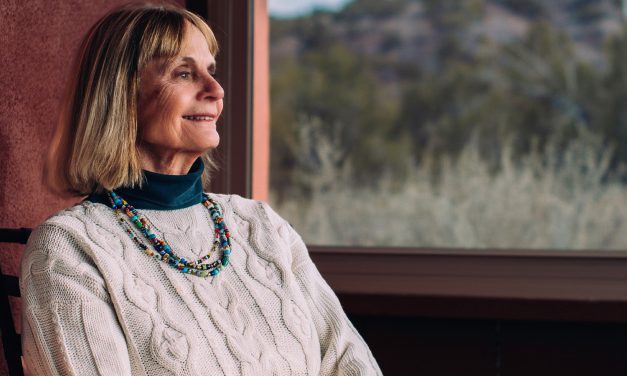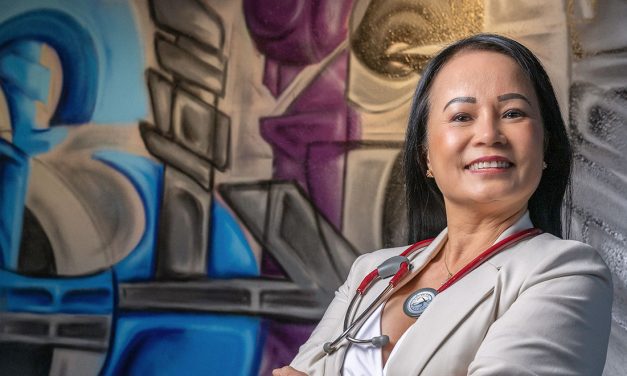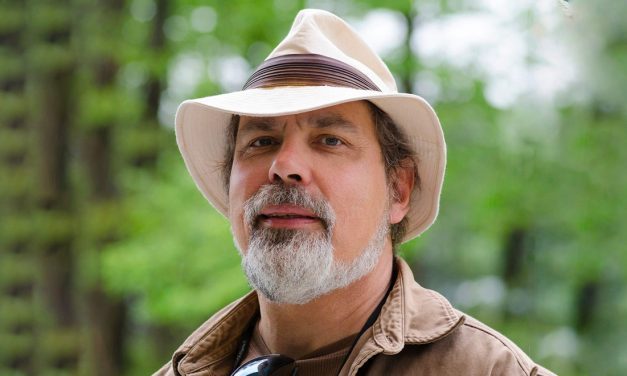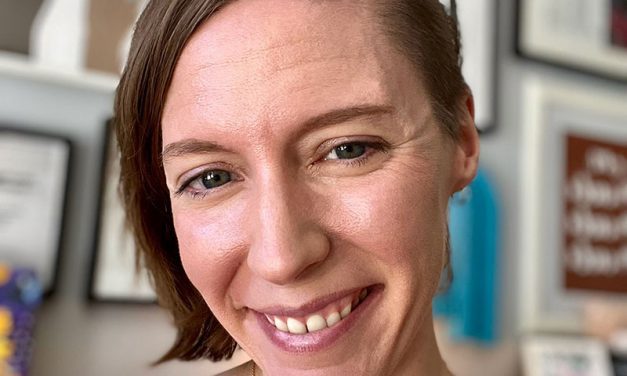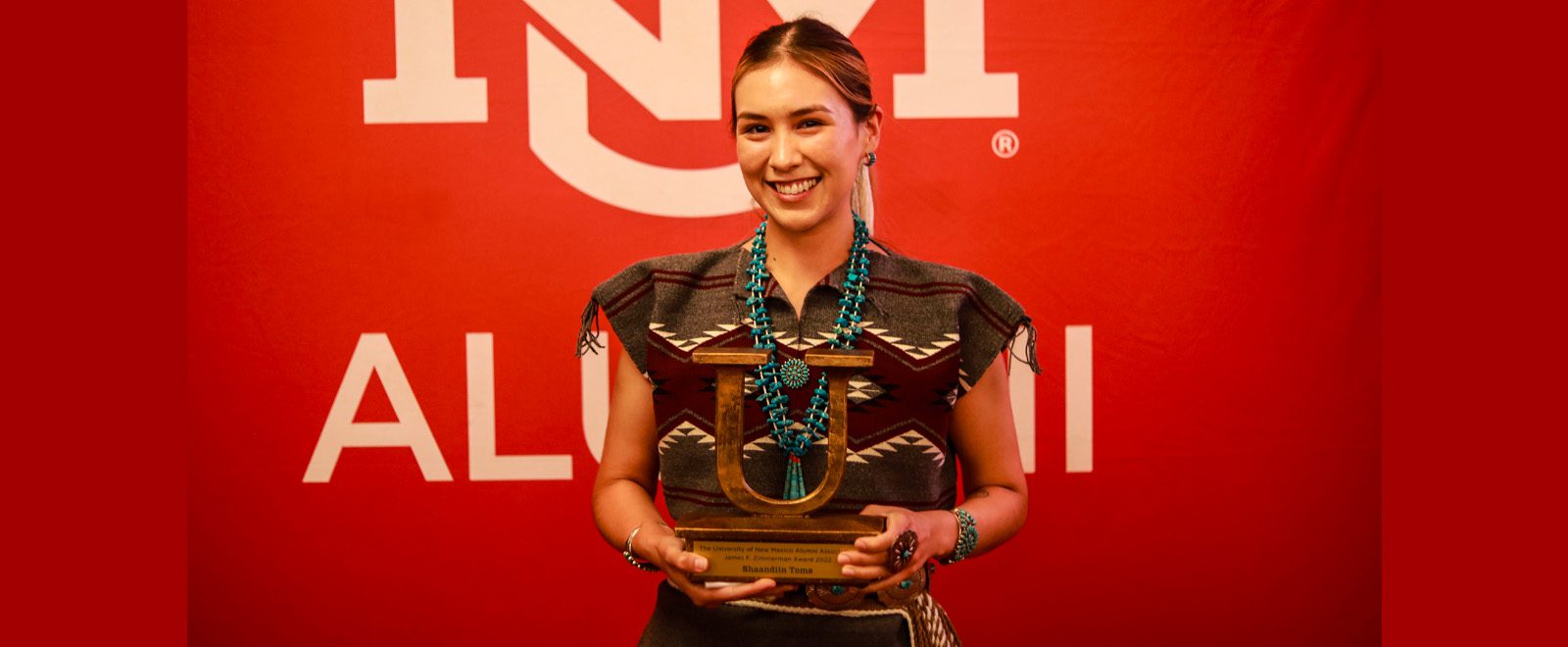
Diné filmmaker Shaandiin Tome (’15 BFA) turns her lens to Native people
In a Place Where We Can Celebrate
By Ellen Marks
It all started with a 7-year-old girl and a VHS camcorder tucked away in a back closet.
The girl was Shaandiin Tome, and the camcorder had been a Mother’s Day gift that her brother dragged out one day from its out-of-the way spot.
The siblings and their cousins put it to good use making movies, and Tome began narrating her young life in a manner similar to today’s social media influencers.
“I would say, ‘Hi, my name is Shaandiin,’ like I had a pretend audience,” she says.
More than two decades later, the audience is no longer pretend.
Tome is now an acclaimed filmmaker who is also winning success as an indigenous cinematographer and director. She graduated from The University of New Mexico in 2015 with a bachelor of fine arts degree in film and digital media production.
Last year, Tome was honored with the James F. Zimmerman award, which the UNM Alumni Association gives to graduates for outstanding achievement.
Her latest project, “Long Line of Ladies,” drew top jury prizes for best short documentary at the South by Southwest festival in Austin and at the San Francisco and Seattle international film festivals. That made the project eligible for a 2023 Academy Award for best documentary short film, although it did not go on to make the cut through advanced competition rounds.
Tome’s 22-minute film, which she co-directed, tells the coming-of-age story of a 13-year-old member of Northern California’s Karuk tribe. Ahtyirahm “Ahty” Allen is preparing for her “Ihuk,” or Flower Dance, a tradition the tribe has worked to revive since the 1990s.
The practice was abandoned after the California Gold Rush brought sexual violence to Native American girls and women — a history that Tome’s film relates, but doesn’t dwell on.

Shaandiin Tome
“I think it’s one of the first indigenous, Native documentaries that celebrates a young woman and celebrates a family.”
Tome, who is Diné, wanted her story-telling to be a joyous celebration.
“I think it’s one of the first indigenous, Native documentaries that celebrates a young woman and celebrates a family,” says Tome, 29. “And it doesn’t focus on the traumas of native people. It gets it out of the way in the beginning, with title cards that talk about the Gold Rush forcing ceremonies to lie dormant, but it doesn’t focus on that.”
It’s part of Tome’s struggle: to tell a story from the perspective of a young Native woman that includes history, which is often violent, but also resilience and pride.
“I want there to be something that’s positive and uplifting, that serves as a reminder that we are a people that have adapted and gone through circumstances for a reason, and now we’re in a place where we can celebrate,” she says. “We don’t have to be at the whim of people who are trying to place their traumas on us.”
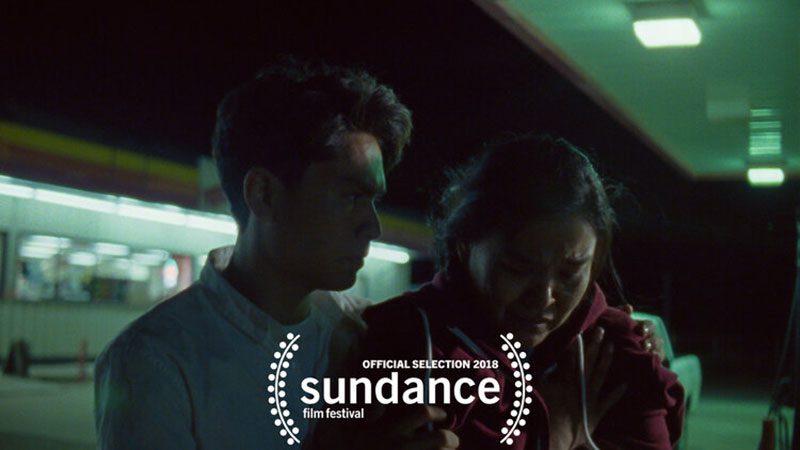
Adam Piron, director of the Indigenous Program at the Sundance Institute, says Tome is among a generation of young Native filmmakers who are “embracing their identity more.”
Piron worked with Tome starting in 2016, when she was chosen for the Sundance Full Circle Fellowship, which focuses on indigenous young adults. The next year, she was named a fellow at the institute’s Native Filmmaker Lab.
“She’s a Diné woman who grew up in more of an urban environment,” Piron says. “There’s always sort of an urban versus rural tension in our community. Her journey to embracing who she was and where she was coming from, you see that a lot in her work.”
Tome was born in Albuquerque and attended Cibola High School, although she also has lived in Denver, Fairfax, Va., and the Navajo Nation. Her father, Deswood Tome, is a former Navajo Nation spokesman, and she says both parents are artists.
Tome’s summers growing up included stays at her grandmother’s house, on the reservation in Arizona near the New Mexico border.
Tome says Albuquerque and the Navajo Nation have always been her home, as well as the “through line of my life.”
Her breakout short film, “Mud,” mirrored her personal experience with the issue of wintertime exposure deaths in the Gallup area, mostly “among people leaving bars,” she says.
It focused on the last day in the life of a woman told “through the lens of addiction” with the goal of “trying to give a humanistic portrait of a stereotype that’s been pinned on us,” Tome says.
The film, which premiered at the Sundance Film Festival in 2018, was based on one of Tome’s relatives, whose belongings were found in a ditch but whose body wasn’t found until weeks later.
“My dad was very affected by it,” she says. “He was the one who identified the belongings.”
She notes that while a lot of her work is “Indigenous-based,” she also has done a variety of other projects. For example, her growing resume includes work for brand companies such as Vox, Levi’s and Brooks, and for media organizations such as PBS and National Geographic.
“She can write, she can shoot, she can edit, she can produce, and she has mastered all of those at a really high level,” says Miguel Gandert, former director of the UNM Interdisciplinary Film & Digital Media Program. “One thing about her is she’s fearless.”
But that wasn’t always true.
Tome says she got “really depressed” during the three years she spent working on film industry sets while attending UNM and just after graduating.
“There’s something very magical about films that I felt from a young age,” Tome says. “But I started seeing that creativity was not part of the equation. It was competitive and wasn’t a space for a marginalized woman, for marginalized people in general. It was really tough to figure out, ‘Is this really what I want to do with my life?’”
Her breakthrough came when she joined the prestigious Sundance, where she learned that “independent film is thriving, and that stories from anybody and everybody are viable.” She says she started writing her own material and “working with peers I loved and adored. It was a complete life-changer for me.”
The film she’s now working on is a series of vignettes “about the life of a car, told through people who have owned it.”
Her grandfather was a mechanic, and the family had to rely mostly on cars that were given to them or borrowed as needed. So, she says, a car in her family was really much more than just a vehicle for getting around.
“You have an attachment to an object, and you feel that it can be taken away at any moment,” she says. “It’s kind of a metaphor for how society quickly gets rid of things and tosses them aside, versus caring for something.”
Her future also includes trying to have more balance, both in her life and in her approach to story-telling.
“I think it’s hard to be in a place to express yourself while also trying to express a whole people, and you end up fighting with yourself a lot,” Tome says. “In my teachings, you want to lead a very balanced life. You are really trying to carry your ancestry with you, but then also trying to carry the future with you. It’s very much a balance of trying to figure that out. But you have to rely on it, too. It’s like you’re not on this journey alone.”
Spring 2023 Mirage Magazine Features
In a Place Where We Can Celebrate
Diné filmaker Shaandiin Tome turns her lens to native people…
Read MoreAnne Hillerman Carries On A Family Tradition
UNM Alum expands on her father’s literary legacy…
Read MoreCreating a Home for the Arts
UNM’s second-largest college is poised to move onto Central Avenue…
Read MoreKnow What You Want and Persevere
Triple alumna followed her dream from Vietnam to a doctor of nursing…
Read MoreProbing the Centaurs
NASA’s newly employed James Webb Space Telescope is reaching ever deeper…
Read MoreMy Alumni Story: Erin Barringer-Sterner
When I was in high school, my family relocated to Rio Rancho…
Read More

